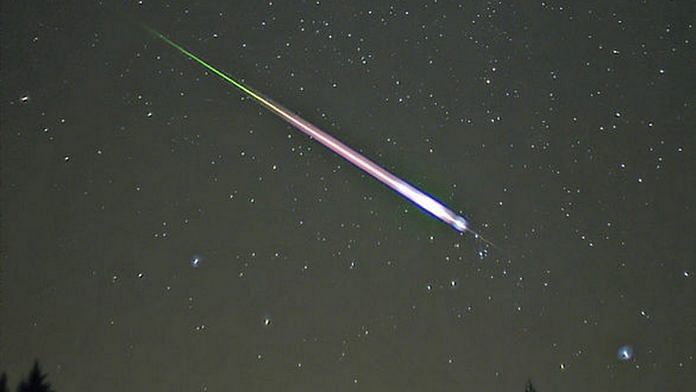Bengaluru: The Leonid meteor shower is expected to peak Tuesday and Wednesday (17-18 November) and will send shooting stars across the sky. The meteor has been visible since the first week of November and will continue to put on a show till the end of this month.
During the peak, 10 to 15 meteors are likely to be visible every hour. The phenomenon will be best viewed after midnight and before dawn on both the days (and for the rest of the month), with most visibility in the Northern Hemisphere. The showers can be seen with the naked eye. Using binoculars or telescopes is likely to limit the field of vision.
The showers will be visible all over India, under optimal viewing conditions.
This meteor shower is called ‘Leonid’ as it appears to originate from the constellation Leo in the night sky and radiates outward.
Meteor showers are more visible on cloudless and moonless nights, under less polluted conditions. This week, the moon will be less than five per cent full, offering conducive conditions for cloudless nights. Chances of an impressive viewing are higher in locations far away from the lights of cities.
Also read: Jupiter’s icy moon Europa can glow in the dark even with no sun, NASA scientists find
Leonids come from comet Tempel-Tuttle
The Leonids originate from the comet Tempel-Tuttle, which takes 33 years to orbit the sun. As the comet moves along its path, deviating slightly with each orbit, it leaves a trail of debris that spreads out in space. These particles are called meteoroids, and are either tiny rocks, bits of ice or just dust.
The earth passes through this trail every November and the debris left by Tempel-Tuttle hits our atmosphere, producing streaks of light. This is described as a meteor shower. The peak of the Leonid meteor occurs when the earth passes through the densest part of this debris trail, and typically lasts two-three nights.
Leonid debris particles are very small and easily disintegrate even in the high upper atmosphere. For this reason, they can never successfully pass through the atmosphere and reach the earth’s surface.
Leonids have also impacted the moon, which lacks a protective atmosphere. Seismic instruments left on the surface by the Apollo missions have confirmed Leonid meteor showers striking the surface of the moon. First visual observations made from earth had confirmed this phenomenon in 1999.
Several other meteor showers are visible throughout the year, and often occur simultaneously. Currently, along with the Leonids, the Taurid showers are also visible. The Geminids and Ursids will be visible next month.
Comet Temple-Tuttle will return to the inner solar system in 2031.
Also read: Astronomers detect first fast radio burst in our Milky Way galaxy




CORRECT.
Optimal conditions?? There are no optimal conditions in cities due to pollution; all you can see us dense black starless light. I just can’t remember when was the last time I saw shooting stars, or Milky way on moonless nights. ??